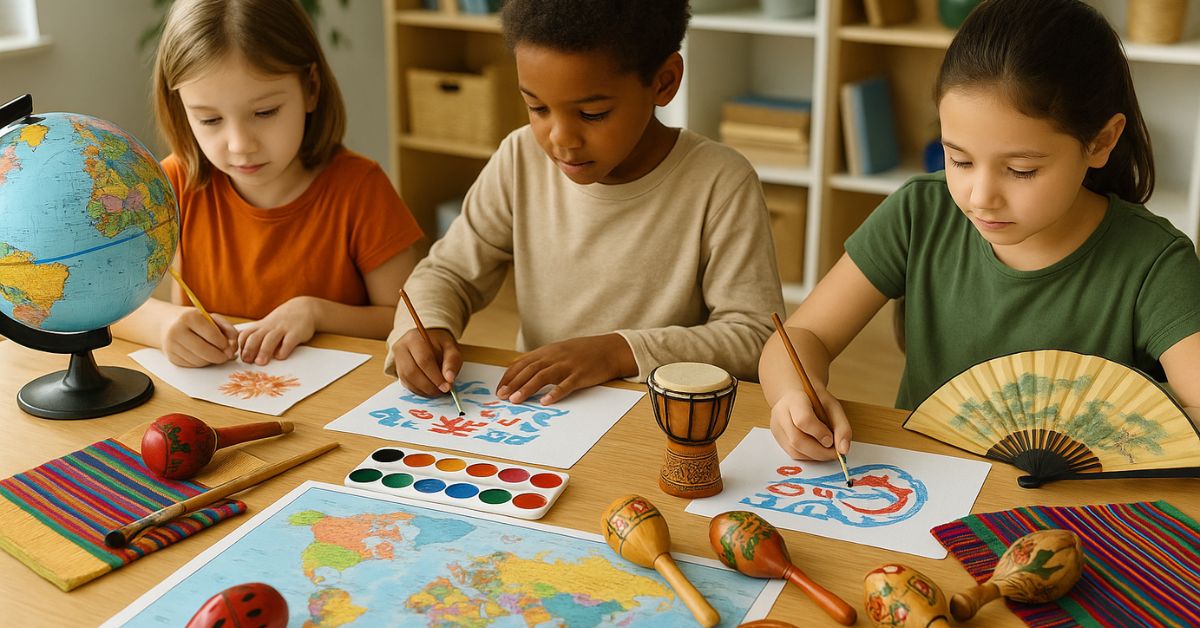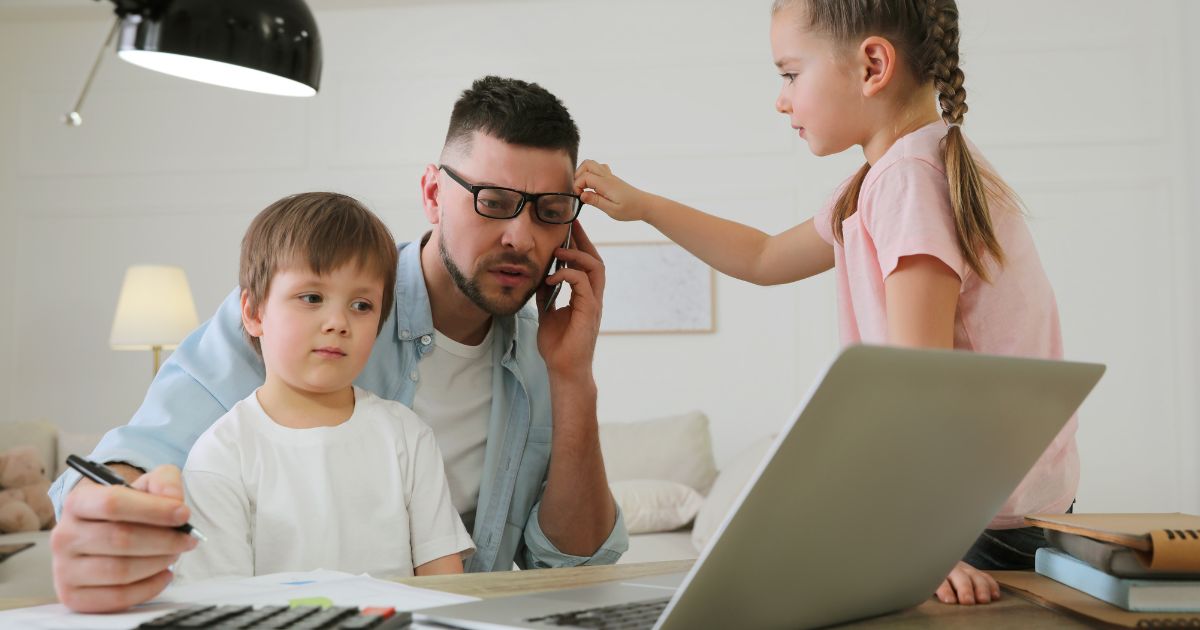Teaching world cultures through art offers homeschool families an exciting way to foster creativity while introducing children to global perspectives. By combining hands-on projects with musical exploration, parents can create dynamic, immersive learning experiences. These activities not only teach geography and history but also nurture an appreciation for cultural diversity.
Below are practical ideas and projects to incorporate art and music from around the world into your homeschooling routine.
Why Use Art and Music to Explore Cultures?
Art and music are powerful ways to connect with different cultures. They bring abstract concepts to life and make learning memorable. Children naturally gravitate toward creative activities, making art and music effective tools for exploring traditions, beliefs, and stories from around the globe. Both mediums spark curiosity and provide opportunities for discussion, whether through studying indigenous painting techniques or playing instruments from specific regions.
By focusing on creative expression, these activities encourage children to empathize with other cultures and understand their own place in a global community. For homeschool families, this approach offers the added benefit of adaptability. Lessons can be customized to fit specific interests, grade levels, and learning styles.

Cultural Music Activities for Homeschool
Music serves as an auditory gateway to the world’s cultures. Incorporating music into your homeschool curriculum not only makes lessons more engaging but also helps children develop listening skills and rhythm. Try the following practical activities to teach cultural awareness through music.
- Create a Homemade Instrument
Choose an instrument from a specific culture, such as maracas from Latin America or the shekere from West Africa. Gather simple materials like beads, recycled containers, or string to build the instrument at home. After constructing it, explore the instrument’s cultural significance and demonstrate how it’s traditionally played. This hands-on activity engages creativity while teaching about craftsmanship and sound production.
- Listen and Analyze Music from Different Cultures
Spend time listening to music from diverse regions, such as traditional Japanese koto music or Aboriginal didgeridoo tunes. Encourage your children to notice the differences in rhythm, instruments, and melodies. Discuss what these musical elements reveal about the culture. For example, upbeat rhythms in African music often serve as the foundation for dance, while slow, harmonic melodies in Northern European folk songs convey themes of nature and storytelling.
- Make a Cultural Playlist
Create a playlist featuring songs from around the world. Include genres like Indian classical, Flamenco from Spain, and Brazilian Samba. To deepen the experience, research the context of each track—who traditionally performs the music, and for what events or ceremonies? Encourage your children to share their thoughts on why the music appeals to them or how it feels relevant to their own lives.
- Learn a Song in Another Language
Teaching children songs in another language is both a musical and linguistic adventure. Start with simple pieces like French nursery rhymes or Caribbean call-and-response songs. Singing introduces children to new vocabulary while also allowing them to experience linguistic patterns that may differ greatly from their own.
Global Art Projects to Inspire Creativity
Art-making celebrates the physical, visual, and tactile qualities of culture. Through global art projects, students engage directly with various traditions, techniques, and symbols. These activities foster respect and curiosity, encouraging children to interact with global cultures in a meaningful way.
- Mosaic Art from Ancient Rome and the Middle East
Introduce your children to mosaic art, a technique found in both Roman and Middle Eastern cultures. Gather colorful paper, tiles, or beads to create their own mosaics. Start with simple patterns, and explain the historical significance of mosaics in public artwork and architecture. This activity is ideal for discussing how similar art techniques can appear in vastly different geographical regions.
- Paint Using Aboriginal Dot Art Techniques
Aboriginal art from Australia uses intricate dot-painting methods to represent stories and natural landscapes. To replicate this, provide children with cotton swabs or brushes to create their dots. Explain the symbolic meanings behind certain colors and shapes in Aboriginal culture, and encourage them to use colors with intent in their project.
- Make African Patterned Textiles
Explore African cultures by creating textiles inspired by kente cloth from Ghana or mud cloth from Mali. Use markers, stencils, or fabric paint to design patterns that mimic traditional symbols. Pan out the lesson by discussing the meaning behind each pattern and its connection to heritage or community.
- Create Japanese Calligraphy
Help children learn some basic Japanese kanji characters, then practice writing them using calligraphy brushes and ink or markers. This immersive activity teaches patience, fine motor control, and cultural respect. Share the importance of calligraphy in Japanese culture and connect it to the broader theme of disciplined artistic practice.
Exploring Culture Through Storytelling
Across many cultures, stories are integral to the communication of values and history. Homeschool families can use storytelling as a means of exploring these narratives while tying art and music into the experience. Many cultures pair storytelling with activities like puppet shows or shadow plays, which your child can replicate at home. For instance, some Southeast Asian countries use shadow puppets to act out folklore, while Native American tribes incorporate music into their storytelling ceremonies. These activities provide valuable insights into how art, music, and oral traditions intertwine.
Seasonal Focus for Festivals and Celebrations
Link cultural exploration to seasonal events to keep lessons timely and engaging. For example, during fall, study Mexico’s Day of the Dead by creating papel picado (paper cutouts) and assembling altars as a family. Design sugar skulls using craft supplies like glitter and markers, and discuss the importance of honoring ancestors.
Another option is to spotlight Indian culture during Diwali. Use chalk or colored sand to create rangoli, a traditional art form displayed during the festival. Tie in music by listening to Bollywood soundtracks or traditional Indian ragas played during holiday celebrations.
Focusing on festivals helps children learn that cultural traditions are often deeply connected to seasonal cycles, food, and community bonding.
Resources for Expanding Art and Music Exploration
The internet provides countless ways to discover new cultural art and music projects for homeschool. Utilize the following tools to elevate your lessons.
Websites like the Louvre or the British Museum offer online exhibits and virtual walkthroughs. Many of these tours include global art collections and can be used to introduce children to various cultural artifacts.
- YouTube Channels
Seek channels that focus on world music or cultural art tutorials. For example, watch professional musicians play traditional instruments and share the videos with your kids.
- Children’s Craft Books
Invest in craft books that highlight international projects. Look for age-appropriate resources that outline step-by-step instructions and offer historical context.
- Local Cultural Festivals
Research multicultural festivals held in your area, where you might find art demonstrations or live musical performances. Bringing children to these events offers them firsthand experience of different cultural practices.
Thinking Big About Cultural Diversity
Teaching world cultures through art and music is more than a creative endeavor—it’s a step toward cultivating global understanding in your homeschooling practice. By balancing fun projects with meaningful discussion, you’re preparing your children to appreciate diversity and think critically about how cultures connect and differ. Activities like building instruments or creating artwork become gateways to discovering history, geography, and sociocultural traditions.
Engaging with global art and music can turn homeschooling from a classroom-like setting into an imaginative, open-ended exploration of the world—helping children grow into more conscientious and curious citizens.





